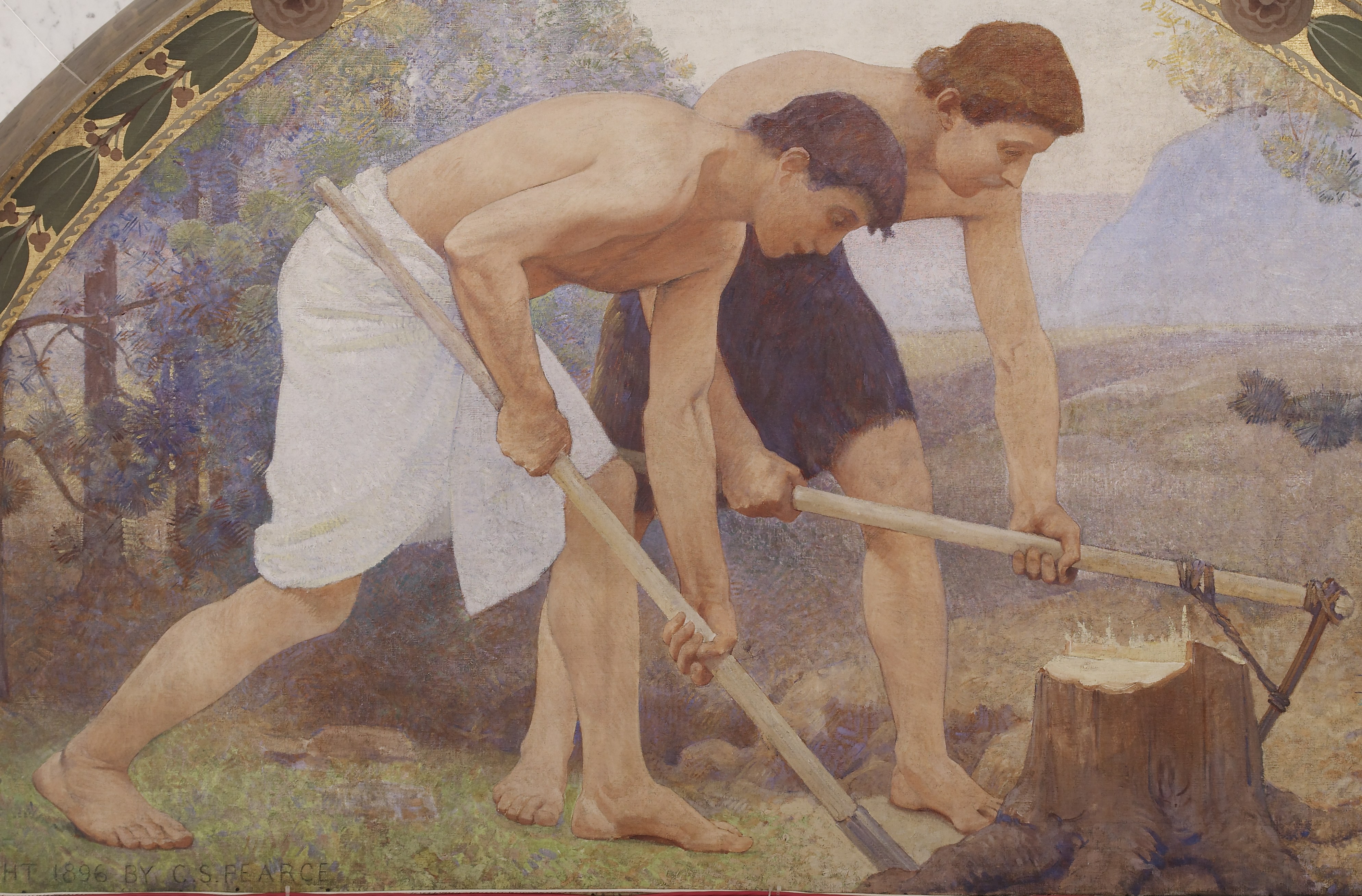 Manual labour (in Commonwealth English, manual labor in
Manual labour (in Commonwealth English, manual labor in American English
American English, sometimes called United States English or U.S. English, is the set of variety (linguistics), varieties of the English language native to the United States. English is the Languages of the United States, most widely spoken lang ...
) or manual work is physical work done by humans, in contrast to labour by machine
A machine is a physical system that uses power to apply forces and control movement to perform an action. The term is commonly applied to artificial devices, such as those employing engines or motors, but also to natural biological macromol ...
s and working animals. It is most literally work done with the hands (the word ''manual'' coming from the Latin word for hand) and, by figurative extension, it is work done with any of the muscles and bones of the human body. For most of human prehistory and history, manual labour and its close cousin, animal labour, have been the primary ways that physical work has been accomplished. Mechanisation and automation, which reduce the need for human and animal labour in production, have existed for centuries, but it was only starting in the 18th and 19th centuries that they began to significantly expand and to change human culture. To be implemented, they require that sufficient technology
Technology is the application of Conceptual model, conceptual knowledge to achieve practical goals, especially in a reproducible way. The word ''technology'' can also mean the products resulting from such efforts, including both tangible too ...
exist and that its capital costs be justified by the amount of future wages that they will obviate. Semi-automation is an alternative to worker displacement that combines human labour, automation, and computerisation to leverage the advantages of both man and machine.
Although nearly any work can potentially have skill and intelligence applied to it, many jobs that mostly comprise manual labour—such as fruit and vegetable picking, manual materials handling (for example, shelf stocking), manual digging, or manual assembly of parts—often may be done successfully (if not masterfully) by unskilled or semiskilled workers. For these reasons, there is a partial but significant correlation between manual labour and unskilled or semiskilled workers. Based on economic and social conflict of interest
A conflict of interest (COI) is a situation in which a person or organization is involved in multiple wikt:interest#Noun, interests, financial or otherwise, and serving one interest could involve working against another. Typically, this relates t ...
, people may often distort that partial correlation into an exaggeration that ''equates'' manual labour with lack of skill; with lack of any potential to apply skill (to a task) or to develop skill (in a worker); and with low social class. Throughout human existence the latter has involved a spectrum of variants, from slavery (with stigmatisation of the slaves as 'subhuman'), to caste or caste-like systems, to subtler forms of inequality.
There are diverse viewpoints regarding the definition of manual labor, and the progression from manual labor to more complex forms can be ambiguous. Authors such as Marx characterize it as simple labor, controversially proposing that all labor can be categorized as such. However, Ludwig von Mises argues that this is an oversimplification, highlighting it as a reason many socialist economic policies face challenges, particularly concerning the economic calculation problem. On the other hand, Paul Cockshott and Allin Cottrell advocate for considering all labor as simple labor, emphasizing the importance of accounting for training in more complex forms of labor. This complexity extends to determining what constitutes unskilled labor, as it raises questions about the nature of labor performed by students when training for specific professions. Ultimately, definitions of manual labor are shaped by economic and political interests, as all societies depend on some form of manual labor for their functioning.
Economic competition often results in businesses trying to buy labour at the lowest possible cost (for example, through offshoring or by employing foreign workers) or to obviate it entirely (through mechanisation and automation).
Relationship between manual labor and class discrimination
Throughout human prehistory and history, wherever social class systems have developed, the social status of manual labourers has, more often than not, been low, as most physical tasks were done by peasants, serfs, slaves,indentured servant
Indentured servitude is a form of Work (human activity), labor in which a person is contracted to work without salary for a specific number of years. The contract called an "indenture", may be entered voluntarily for a prepaid lump sum, as paymen ...
s, wage slaves, or domestic servants. For example, legal scholar L. Ali Khan analyses how the Greeks, Hindus
Hindus (; ; also known as Sanātanīs) are people who religiously adhere to Hinduism, also known by its endonym Sanātana Dharma. Jeffery D. Long (2007), A Vision for Hinduism, IB Tauris, , pp. 35–37 Historically, the term has also be ...
, English, and Americans
Americans are the Citizenship of the United States, citizens and United States nationality law, nationals of the United States, United States of America.; ; Law of the United States, U.S. federal law does not equate nationality with Race (hu ...
all created sophisticated social structures to outsource manual labour to distinct classes, caste
A caste is a Essentialism, fixed social group into which an individual is born within a particular system of social stratification: a caste system. Within such a system, individuals are expected to marry exclusively within the same caste (en ...
s, ethnicities, or races..
See also
* Construction worker * Critique of work * Day labor * Elbow grease * Industrialisation * Manual labor college * Proletariat * Refusal of work * Roughneck * Shadow work * ''The Idler'' (1993) * The South African Wine InitiativeReferences
Bibliography
* * * * * *External links
Musculoskeletal Disorders
(Fair Labor Practices) {{Authority control Employment classifications Labor Work